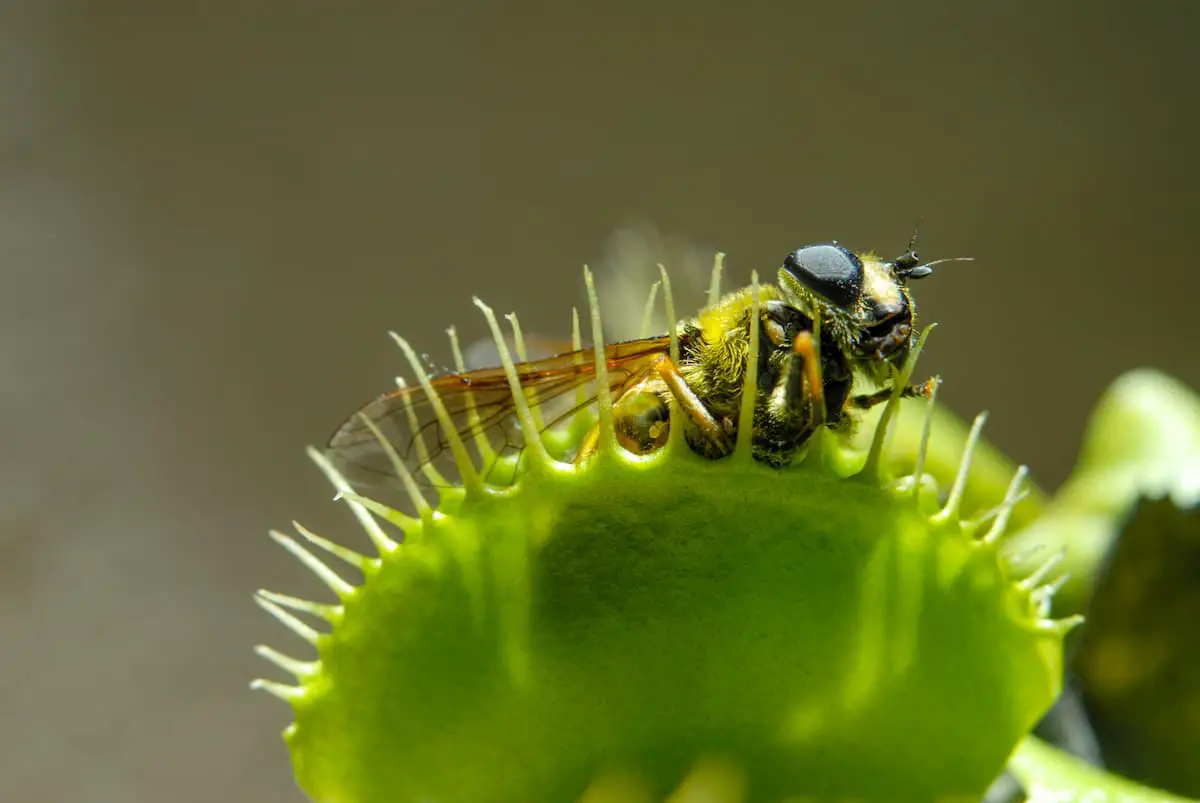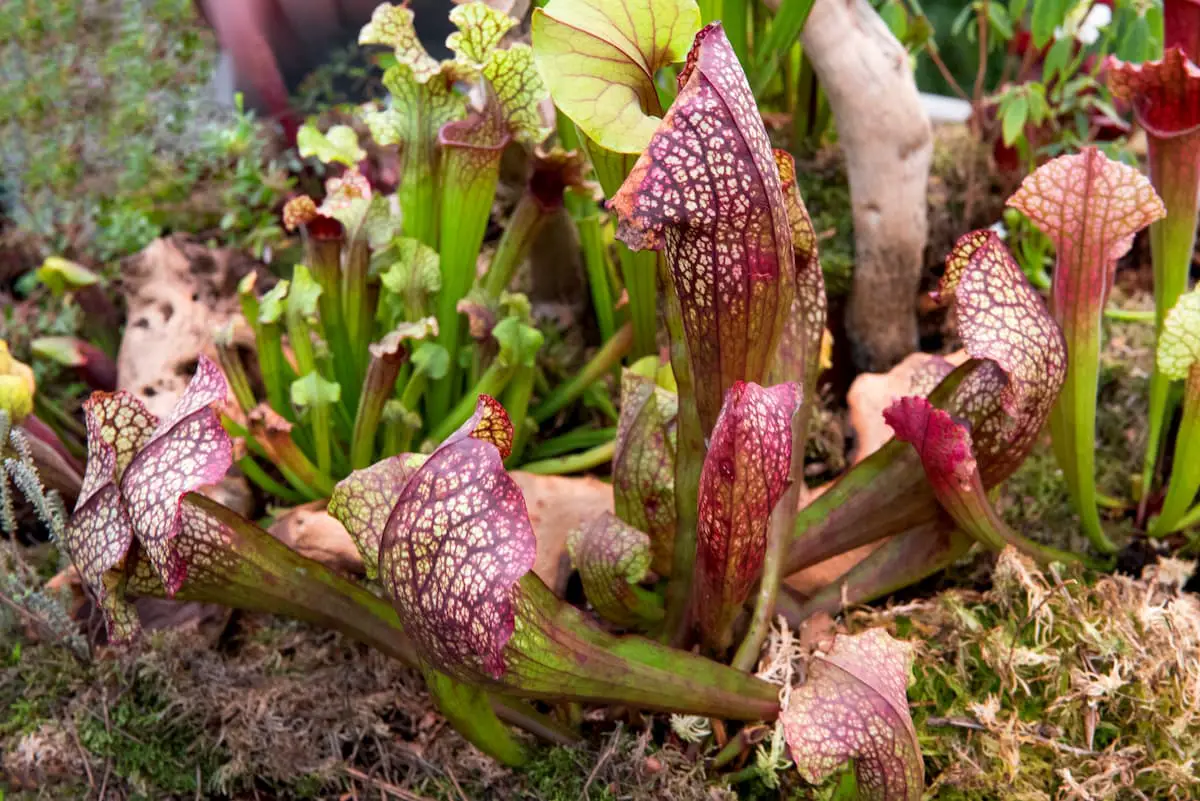Most carnivorous plants are from places with poor soil, so they absorb few nutrients through their roots. They are classified as carnivores of tropical and non-tropical climate. Depending on their variety and size, general care depends on them.
When you start this spectacular hobby, it is expected that questions arise, such as can you overfeed carnivorous plants, or what are the best food options?
While many normal plants need food consistently to grow and thrive the general carnivorous plant shouldn’t be eating non-stop as this could actually shorten their lifespan. Most will need only four feedings a year to continue to grow and live long lives.
If you have asked yourself these questions, don’t worry. In this article, we will provide you with some basic knowledge on how to feed them, since improper feeding can kill them. We invite you to read carefully.
General Care Needed by Carnivorous Plants
All the care of the carnivorous plants, will depend to a great extent on their classification. If they are from a tropical or non-tropical climate, depending on the species, some will require a specific amount of light, some a particular temperature, and others a specific container.
In general, they are resistant, long-lived, and undemanding, as long as they are supplied with the minimum required needs.
To have a carnivorous plant is not something simple; there are a series of cares so that they are in perfect state. Those from tropical climates are more complicated to grow because they require high humidity and warm temperature.
Non-tropical plants live outdoors in areas with cold winters. They go through a dormant period during the winter and live in water gardens.
The minimum that they require and the most important is the following: acclimatization, light, temperature, humidity, the container that will house them, type of water, and the substrate and food, we will talk about the latter.
Feeding of Carnivorous Plants
In the absence of nitrogen in the habitat of carnivorous plants, in their evolutionary process, they generated a substitute feeding system through the capture of animals, especially insects. This exotic evolution is the attraction of a carnivorous plant at the time of acquiring it.
Size counts, when they do, don’t feed them too big insects, because the digestive process of plants is slow and leaves can die.
For the love of your plants, don’t make the mistake of feeding them homemade insects trapped in insecticides. That will intoxicate it, and it will die. The best option to provide them is with live insects.
Care When You Get Home
When you get home from purchasing your first carnivorous plant, the first thing to do is to acclimatize it. You have to place them in an area that is somewhat high in humidity and heat. Carnivorous plants require plenty of light and about 5 hours of sunshine a day.
You’re probably wondering what the best food options are? You should know that carnivores use only food made up of photosynthesis, just like any other plant, although they grow slowly and reduce seed production in this way.
Don’t worry, the best food for carnivorous plants is soft-bodied insects such as flies, mosquitoes, spiders, small ants, and butterflies. You should be especially careful with aphids, red spiders, or mealybugs because although they are carnivorous and feed on insects, they are not immune to pests and diseases.
Respect Their Nature
These exotic plant species know how to feed themselves, it’s their nature. Something that they managed to improve in their evolutionary process and that should overall exonerate you from performing this task. Especially if you place the plant outdoors where insects abound, even more so in summer.
If in weeks you notice that your plant has not hunted, it may be a sign that you are leaving it outside for a short time, or that you are placing it in a place where there are no insects around it. You can help it if you offer it live food once a week, nothing will happen.
Remember, carnivorous plants, if there are no insects, feed by photosynthesis, although in this way, they grow much more slowly.
So, don’t worry if you haven’t been able to do it.
Take Care of Your Curiosity or Boredom
Keep in mind that carnivorous plants have a slow digestion process; if you don’t, you can overfeed Carnivorous Plants. Don’t be surprised if you notice that your plant keeps its traps or mouth closed for a couple of weeks.
Take care of your curiosity or boredom so that this doesn’t cause your plant to become stubborn, since depending on its size and species, there is a certain limit to the time and food it can tolerate.
The other thing is that, save the temptation to play at teaching your plant, if it closes its mouth to hunt its prey, but without any insects to catch, you will be forcing the plant to spend an enormous amount of energy closing its mouth for nothing.
That’s a big mistake, don’t make it.
Special Care
Small carnivorous plants, like babies, have more incredible difficulty in catching insects, either because their traps are small or because they produce little mucilage in the leaves.
This causes growth to be slower. When they are in this stage, this is when they require the most care, and one of them is that they eat well. Be careful with this, filling up all the traps would be counterproductive, putting too much food in them could saturate them with nutrients and they would die.
It is advisable to put an insect every two weeks in one or two traps, only when they are small and if you have observed that they have not eaten for weeks. Remember, the best food options for carnivorous plants are insects with soft bodies, such as flies, mosquitoes, and spiders.
When you do this, make sure the insect is still alive. This is best because the movements insects make to try to escape, stimulate the trap to secrete digestive juices that will help it absorb the insect’s nutrients.
Take care that no fungus comes out of the trap it ate; if you detect it, you should carefully remove the whole affected part with a toothpick or tweezers. I hope to help you with this information.
Final Thoughts on Can You Overfeed Carnivorous Plants
While it may seem odd or weird to not have to feed them constantly and to avoid using fertilizer please take time to properly learn and care for your carnivorous gardens.
These plants are amazing and can give you decades of fruitful life and protection from insects that drive you nuts, like flies and mosquitoes. Make sure that they aren’t abused and feed them a little but every 3-4 months at most unless they are very isolated.
A continuously fed plant will fail eventually as it uses vast energy to process the food and the more energy used the shorter the lifespan will become for many of the plants, like a venus fly trap.




Leave a Reply